
Italian Astronomer Galileo is one of the most famous figures in the scientific community, and a name recognized in nearly every household on the planet. Born Galileo di Vincenzo Bonaulti de Galilei in the city of Pisa in Tuscany, his father was an accomplished musician and a free-thinker with a deep disdain for the established authority, both skills, and traits that were passed on to Galileo.

(Cristiano Banti's 1857 painting Galileo facing the Roman Inquisition, Wikimedia Commons)
With five siblings and heavy financial burdens, Galileo was pushed from a young age to contribute to the family expenses. It was likely this monetary strain that first spurred a passion for inventing in the young scientist, as a source of additional income. Despite their dire straits, Galileo was able to continue his education fully. Astronomy was only one area of interest for him. His initial field of study was medicine, and it was while he was pursuing his medical degree that he first invented the pendulum. His interests quickly switched to mathematics, physics, and natural philosophy.
Galileo became what we term as a “polymath”, an expert in a wide variety of sciences and studies. He went on to invent devices and make discoveries that heavily influenced modern irrigation, medicine, and astronomy, among many other fields. Not only has he been termed as “the father of modern science”, but also “the father of modern physics”, “the father of scientific method” and “the father of observational astronomy”. In case you’re still wondering why, here’s a chronological list of Galileo’s major contributions to science, all made in his 50 years of work.
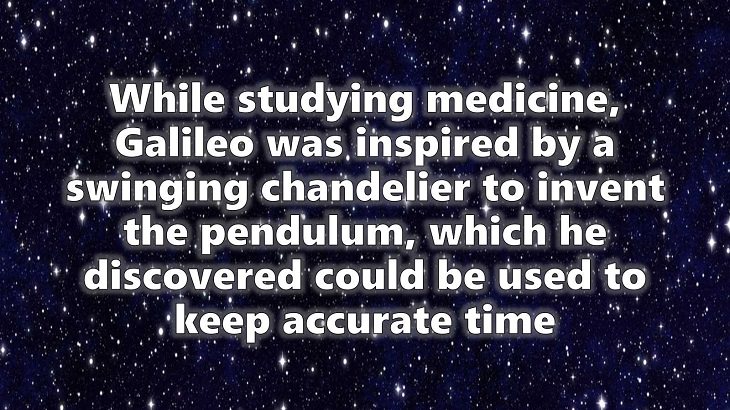
While studying medicine, Galileo was inspired by a swinging chandelier to invent the pendulum, which he discovered could be used to keep accurate time. 100 years later, Christiaan Huygens would use this device to invent the pendulum clock.
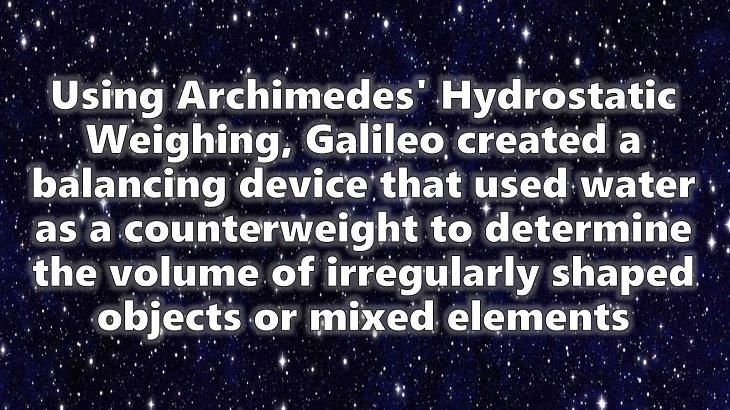
Using Archimedes principle of Hydrostatic Weighing, Galileo created a balancing device, similar to the modern scale, that used water as a counterweight to determine the volume of irregularly shaped objects or mixed elements. Jewelers would use “the Bilancetta” to display their metal’s purity.
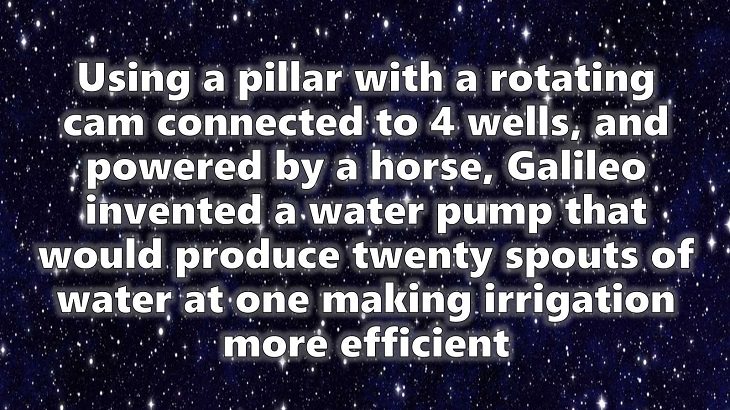
Using a pillar with a rotating cam connected to 4 wells placed diametrically opposite each other, and the entire apparatus finally powered by a horse, Galileo invented a water pump that would produce twenty spouts of water in a single shift, to make irrigation of crops more efficient.
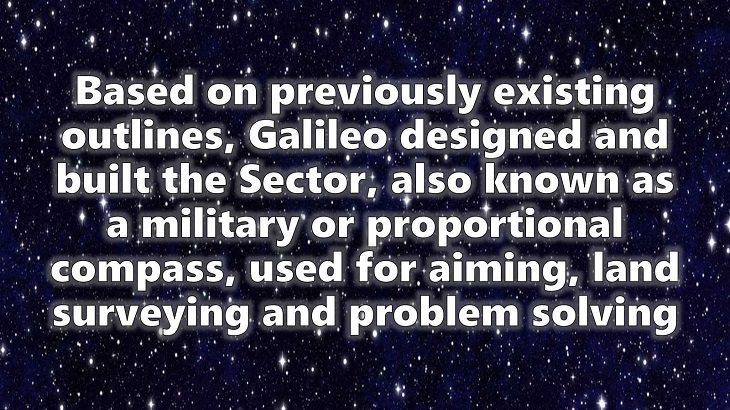
Based on previously existing outlines, Galileo designed and built, with the help of instrument maker Marc'Antonio Mazzoleni, the Sector, also known as a military or proportional compass, that could be used for aiming, land surveying and solving mathematical conundrums.

Expanding on Aristotle’s theory that heavier objects fall faster, Galileo proved that all objects, regardless of weight, have a unified rate of deceleration, a theory he termed the Laws of Motion, which would contribute heavily to Isaac Newton’s 3 laws of motion.

With no device to determine temperature available, Galileo used water and concentrated ethanol to create an instrument that could accurately measure temperature, named the thermoscope, a precursor to the thermometer.

Galileo refined the initial telescope invented by Dutch scientist Hans Lippershey, by increasing the power of the lens of the telescope 30 times, which aided in numerous astronomical discoveries, for Galileo as well as future astronomers.
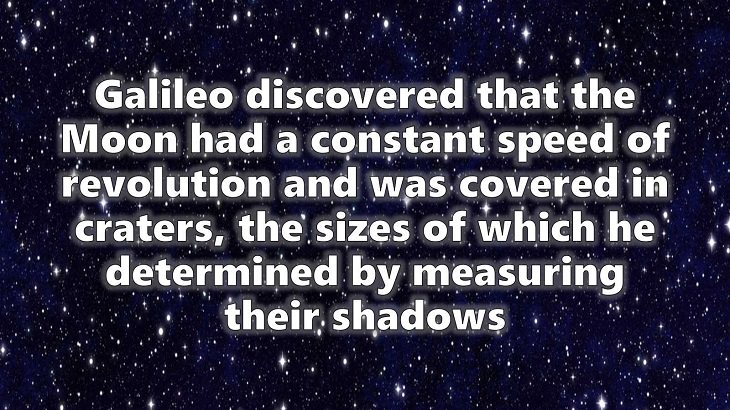
Using his revitalized telescope, Galileo discovered that the Moon had a constant speed of revolution and was covered in craters, the sizes of which he was able to determine by measuring their shadows.
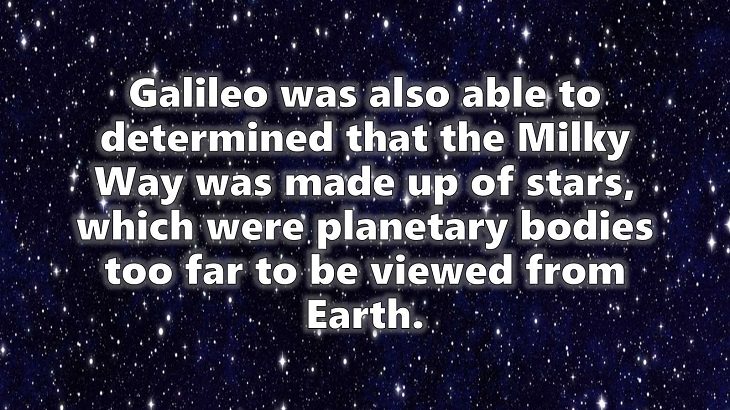
With the telescope, Galileo was also able to discern the Milky Way and determined that it was made up of stars, which were planetary bodies too far to be viewed independently from Earth.
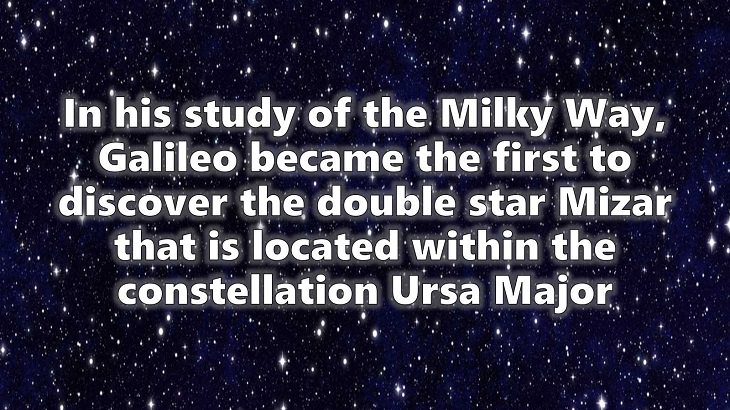
In his study of the Milky Way, Galileo also became the first to discover the double-star Mizar that is located within the constellation Ursa Major.
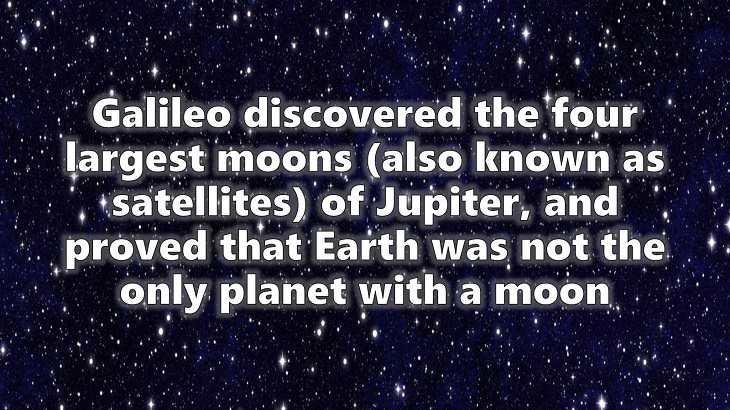
Galileo discovered four planets orbiting Jupiter, which were in fact the four largest moons (also known as satellites) of Jupiter, and proved that Earth was not the only planet with a moon.

The largest moon of Jupiter, Ganymede was discovered by Galileo shortly after the discovery of the first 3, which further supported Galileo’s heliocentric assertions (that the sun is at the center of our solar system)
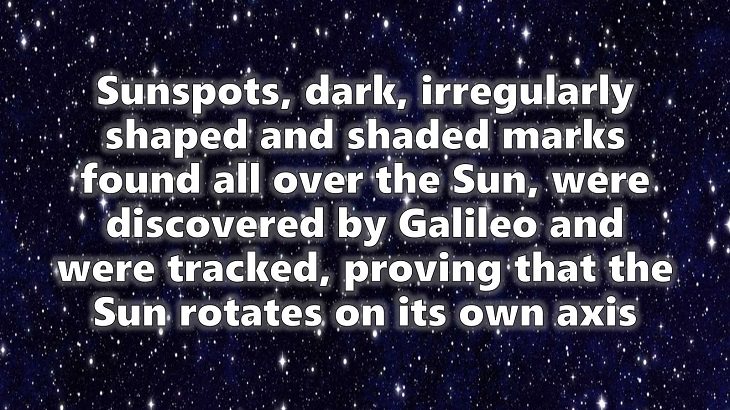
More sunspots, which are dark, irregularly shaped and shaded marks found all over the Sun, were discovered by Galileo and were tracked, thus proving that the Sun rotates on its own axis.

After another 5 years with his eye in the sky, Galileo wrote and published his Theory of Tides, which sought to determine the gravitational effects of other planetary bodies on the Earth’s oceans and tides.
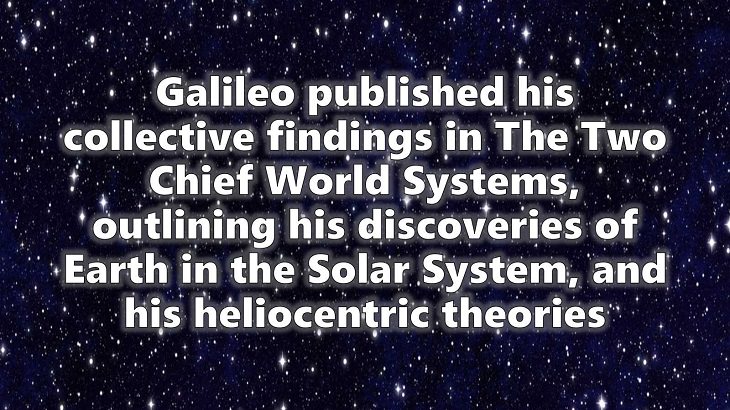
Galileo published a book of his collective findings, entitled The Two Chief World Systems, outlining his discoveries of Earth’s position in the Solar System, and challenging the standing Geocentric principles with heliocentric theories
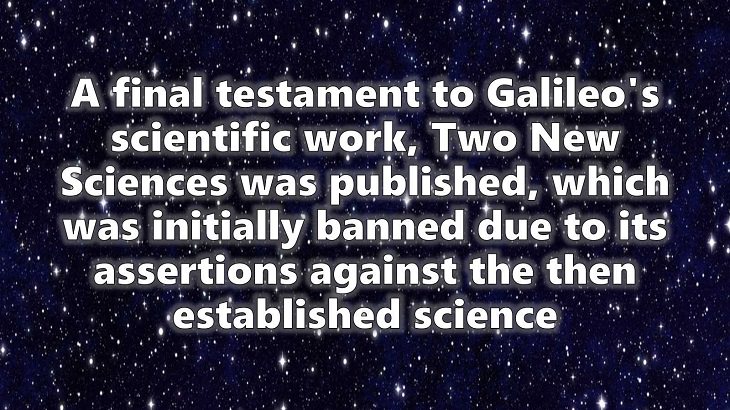
The last of Galileo’s publications and a testament to his scientific work, the book the Two New Sciences was released and was initially banned in numerous regions due to its assertions against what was then established science, which has since been debunked.